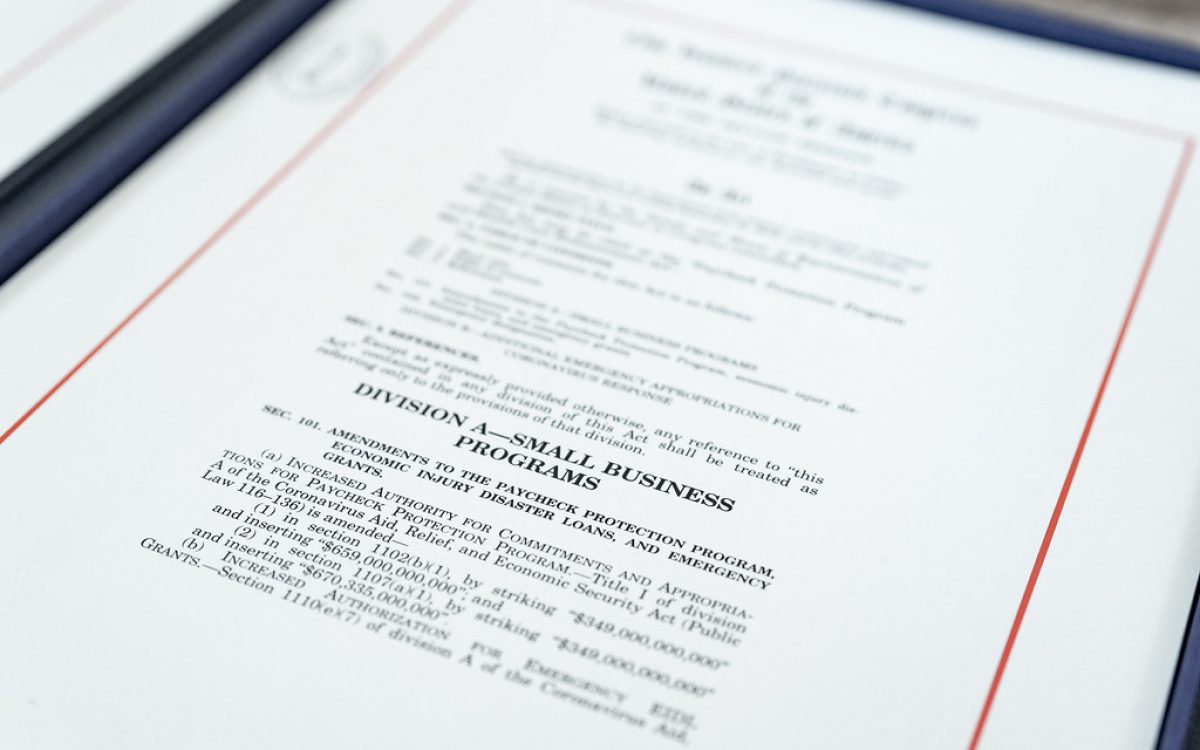The Small Business Administration (SBA) has announced the release of the Paycheck Protection Program (PPP) Loan Forgiveness Application. The Treasury Department and SBA released the 11-page application form and instructions which is designed to help borrowers understand the process by which their loan forgiveness amount will be calculated and the overall approach for loan forgiveness. Note however, Congress is anticipated to vote as early as this week to extend the loan forgiveness period from eight (8) weeks to sixteen (16) weeks, which would give employers more time to use the funds and, as a result, more time to request loan forgiveness. SBA will have to revise the application and instructions, depending on what changes Congress ultimately makes to the program. But for now, the loan forgiveness application steps are outlined below.
Determining the loan forgiveness amount
The process to calculate the amount of loan forgiveness requires three steps:
1. Determine the maximum amount of possible loan forgiveness based on the borrower’s expenditures during the eight (8) weeks after the loan is made. The 8-week period in which expenses must be incurred or paid can begin on
- the day the PPP was disbursed, or
- for borrowers with a biweekly (or more frequent) payroll schedule, the eight (8) weeks may begin on the first day of the first pay period following the PPP loan disbursement.
2. Determine the amount, if any, by which the maximum loan forgiveness will be reduced due to reduced employment or reduced wages.
- Borrowers can avoid having their loan forgiveness reduced if they restore an employee’s pay to an amount greater than or equal to their annual salary as of February 15, 2020.
- There is no reduction in the forgivable loan amount for borrowers who reduced their FTEs during the period beginning on February 15 and ending on April 26, 2020, but who restored the FTEs to the level that existed on February 15 no later than June 30, 2020. There will be no penalty if an employer cannot maintain FTE count due to circumstances beyond its control (employee quits, employee is terminated for cause or voluntarily takes a reduction in hours).
1. Apply the 75% rule that requires that at least 75% of eligible loan forgiveness expenses go towards payroll costs. A borrower’s maximum loan amount could be reduced if the borrower’s eligible nonpayroll expenses exceed 25% of the total eligible expenses. The maximum eligible loan forgiveness is payroll expenses divided by 0.75.
Any loan amount that is not forgiven will be subject to the original terms of a two-year maximum loan at 1% interest rate with payments deferred for the first six months
What documentation is needed to submit the application?
Along with the completed application, borrowers will be required to submit documentation to substantiate their proper use of the loan funds. Lenders may require slightly different forms, but the information employers will need to provide will include the following:
1. Payroll Documents
- Bank statements or third-party payroll service provider reports documenting the amount of cash compensation paid to employees.
- Tax forms for the periods that overlap with the coverage period.
- Payment receipts, cancelled checks, or account statements documenting the amount of any employer contributions to employee health insurance and retirement plans that the borrower included in the forgiveness amount.
2. Full-Time Employees (FTEs):
- Documentation showing the average number of FTEs for the borrowers selected reference period. Documents may include payroll tax filings and state quarterly wage reporting and unemployment insurance tax filings.
3. Nonpayroll Expenses:
- Business mortgage interest payments: amortization schedule and cancelled checks or lender account statements from February 2020 and covering the 8-week period.
- Business rent and lease payments: Copy of current lease and receipts or cancelled checks or lessor account statements from February 2020 and covering the 8-week period.
- Business utility payments: Copy of invoices from February 2020 and the 8-week period and receipts, cancelled checks, or account statements
